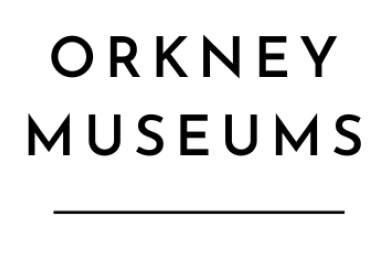Support the Museums and St Magnus Cathedral with Online Donations

Covid-19 has hit everyone hard, museums and galleries as well as businesses. There is now a way that you can support Orkney Museum, Corrigall Farm Museum, Kirbuster Museum, Scapa Flow Museum and St Magnus Cathedral, by donating money online. You can even select where you would like your donation to go. With no sales or donations for almost a year we are relying on your support even more during the pandemic. Every donation is greatly appreciated. Please follow the link below or at the foot of the page to make your donation. Thank you.
The Orkney Museum

The Orkney Museum is owned and run by Orkney Islands Council. Entry is free, but the support of our visitors, through donations and purchases from the museum shop, helps us to care for our buildings and collections, welcome visitors to the museum, respond to enquiries and facilitate research access to our collections. The Orkney Museum houses the main archaeology and social history collection for Orkney, which gives the visitor a greater understanding of the islands’ prehistory and history.
Whether you have visited in the past, plan to visit in the future, or simply care about Orkney’s rich history and culture, please support us with a donation, if you can, to help us continue caring for Orkney’s heritage now and into the future.

St Magnus Cathedral

St Magnus Cathedral belongs to the people of Orkney. Its life as a working Church is managed by the Church of Scotland, whilst Orkney Islands Council own and care for the building and run the cathedral as a visitor attraction and venue for cultural and community events.
Donations made through this link go towards keeping the doors of the cathedral open to all as well as contributing towards the costs of maintaining the fabric of the building. Please support us, if you can, to help us look after this beautiful building now and into the future.
If you would like to support the work of the cathedral congregation please visit https://www.stmagnus.org/donate/. The Society of the Friends of St Magnus also fundraise in support of the cathedral – https://www.stmagnus.org/the-society-of-the-friends-of-st-magnus-cathedral/.

Kirbuster Museum

Kirbuster Museum is owned and run by Orkney Islands Council. Entry is free. The earliest part of the house, which contains the central hearth, dates from 1595. Extensions to the house were added in the 1700s.
Kirbuster Museum gives the visitor a feeling of stepping back in time. Living conditions here are not unlike the Neolithic houses seen at Skara Brae. Stone alcoves, a fire in the middle of the room and ‘neuk’ beds built into the wall echo our distant past. The smell of the peat smoke from the fire also evokes a feeling of a time gone by.

Corrigall Farm Museum

Corrigall Farm Museum is owned and run by Orkney Islands Council. Entry is free. This is a good example of an old Orkney longhouse from the 1700s, where animals would have lived in one end and the family in the other. It was ‘moderised’ in the 1800s when the animals were moved into buildings outside the dwelling house.
With its homely fireplace, the visitor gets a good impression of how life was lived in the Victorian Age in Orkney. This was a time when so many men went in search of adventure and money by joining the Hudson’s Bay Company to work in Canada. Many Canadians, predominantly First Nation people, are descended from them and still bear their Orcadian surnames. The outbuildings, especially the barn with its grain kiln, are particularly well preserved.

Scapa Flow Museum


Scapa Flow Museum is owned and run by Orkney Islands Council. Currently closed due to a major redevelopment, but free of charge when open. As part of the ongoing museum redevelopment we have a special fundraising appeal to restore a section of oil painting on hessian taken from the frieze that decorated a wall in the Naval Canteen, Lyness Royal Naval Base, during World War II.

It was painted by Duncan Letters, a shipwright working for Metal Industries, and presented to the Museum’s collection by the architect, John Brandon-Jones, who was posted to Lyness and worked as a civil engineer from 1939 to 1945.
Conserving the painting requires the skills of a specialist conservator and framer. Our fundraising target is £10,000. We need your help to raise the money for this work and save the painting for the benefit of future generations.
Whether you have visited the museum in the past, plan to visit in the future, or simply care about Orkney’s wartime heritage, please support us with a donation, if you can, by following the link. Thank you.
